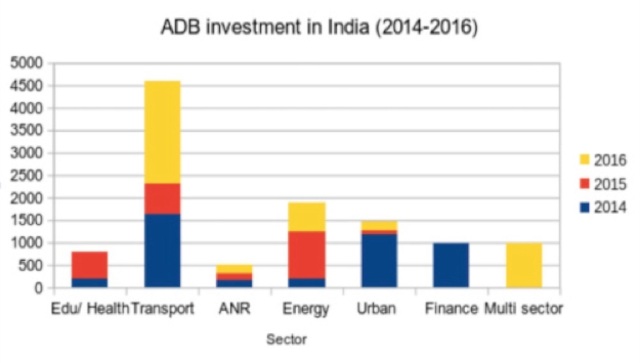The Asian Development Bank was conceived in the early 1960s as a financial institution that would foster economic growth and cooperation in Asia. India was a founding member of the Asian Development Bank (ADB) and is now the fourth-largest shareholder. ADB commenced operations in India in 1986 and has approved 240 loans totalling $36.8 billion.
Asian Development Bank (ADB) has grown to be the third largest source of development finance in the Asia-Pacific region, next to the World Bank Group and the Japanese Government. Documents published in 2017 reveals that from a lending portfolio of just over $3 billion during the first decade, ADB has expanded its lending to $123 billion during the last 10 years.
However, the Mid-term Review (MTR) of ADB’s strategy for 2015 and 2020 have acknowledged that the Asia-Pacific region faces widening inequalities in income and access to economic and social opportunities. Increased investment in infrastructure has failed to provide inclusive growth and social protection to the vulnerable sections of the populations including the workers and women.
India had about 84 ongoing sovereign loans from ADB amounting to $11.9 billion at the end of 2015. Currently, we have about 170 active projects in the country of ADB alone. The massive Vizag-Chennai corridor, the numerous urban development projects across the country, the ReNew clean energy projects in Andhra Pradesh, Gujarat, Jharkhand, Madhya Pradesh, Telangana and Karnataka, are only a few of the 50 odd active and approved projects. Further 23 projects have been proposed to the ADB waiting for approval. These are just projects covered by ADB, adding them to the projects funded by all IFIs shows the extent of their influence in almost every sector – energy, infrastructure, health, etc. The scale of land grab, loss of livelihood, environmental destruction has been completely overlooked by both the IFIs and the government. The rampant privatisation of all the sectors, including health care, is going to affect all those who would not be able to afford health care. In such a time, holding the development banks accountable has become imperative for one’s survival with some modicum of dignity.
 Source: Answer by the Government to the Parliament of India
Source: Answer by the Government to the Parliament of India
The policies of the ADB can be accessed here, whereas the state-wise and sector-wise projects can be accessed from here.
